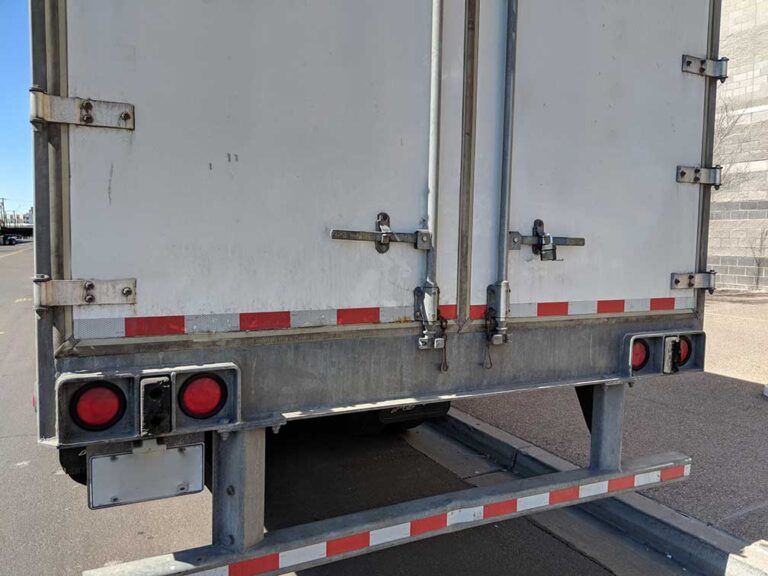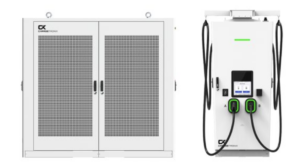Professional drivers have been known, on occasion, to question some of the regulations put in place by federal agencies and their effectiveness in making our nation’s highways safer for everyone.
Once in a while, however, a rule makes the news that causes a national pandemic of head-scratching. It’s even more perplexing when the Federal Motor Carrier Safety Administration (FMCSA) has an opportunity to make a correction … and passes.
The saga to which I’m referring involves multiple government agencies, notably the National Highway Traffic Safety Administration (NHTSA) and the Federal Motor Vehicle Safety Standards (FMVSS) it issues, and the Commercial Vehicle Safety Alliance (CVSA), an independent association that includes government agencies, law enforcement, carriers, manufacturers, safety groups and more.
The regulation in question is FMCSR 393.86, “Rear impact guards and rear end protection.”
The regulation deals with a device once called the “ICC bumper” and later, the “DOT bumper” — but it’s officially referred to as the rear impact guard, or RIG.
The regulation requires RIGs to be installed on all trailers and semitrailers manufactured after Jan. 26, 1998, and regulates its width (with 4 inches of the trailer sides) and how close to the ground (not more than 22 inches) it must be, along with other measurements. These RIGs can be bolted or welded in place, and they must be “substantially constructed.” FMVSS Standard 223 provides strength and force-resistance requirements.
None of the regulations noted in the paragraph above have been contested.
The issue around the RIG requirements comes down to a sticker.
In subparagraph 6, the regulation states that each RIG must be permanently marked or labeled with the name of the manufacturer of the guard, the year it was manufactured and the letters “DOT.” This labeling is certify that the guard conforms to all the requirements of FMVSS 223.
As the CVSA pointed out in a March 12, 2019 petition for rulemaking in which it asked the FMCSA to remove the labeling requirements, there are several issues with the label.
During normal use, the label is exposed to the elements, ice-removal chemicals and other damaging conditions. Parts of the RIG often come into contact with bumper pads or other parts of loading docks, which could damage the label. Further, shippers and receivers often employ devices that grip or restrain the RIG, preventing drivers from moving the trailer while loading and unloading are occurring. Damage to certification labels is a common occurrence.
The CVSA petition also notes that these labels can’t be replaced if they’re damaged or removed. Trailer manufacturers or the suppliers who constructed the RIG will not issue a new certification for a device that has been in use, possibly for years.
Then there’s the justification for a “certification” that the device meets regulations.
Is there a similar requirement for other parts of the vehicle (for example, a sticker on the front bumper “certifying” it was properly made)? Are certification stickers required on critical safety parts like brake drums, or fifth wheels and kingpins? Are manufacturers required to “certify” that windshields are strong enough or tires are able to handle the rigors of the road?
In a September 4, 2024, letter, the FMCSA denied the CVSA petition.
One argument cited for the denial was that, if the RIG was damaged beyond repair and replaced, the new RIG would come with a shiny new certification sticker, so the regulation was satisfied. Not mentioned were the far more likely scenarios in which the “damage” included scratches, scrapes and cosmetic damage such as rust or paint blisters that did not result in replacement of the entire RIG but obliterated the information printed on the sticker.
The FMCSA also cited an NHTSA denial of the petition based on the premise that the labels enable crash investigators to determine if a RIG was compliant with the regulations and whether it contained any defects. Such reasoning assumes, of course, that every RIG with a label is automatically compliant and those with no label are not.
Finally, the FMCSA made the statement that “damaged or worn labels during regular operation of the vehicle on the original equipment would compromise the overall safety to the motoring public but would not represent a compliance issue with the requirements of FMVSS No. 223.”
Wait. Let’s make sure we have this straight.
A damaged or worn sticker compromises “the overall safety to the motoring public” — but it isn’t a “compliance issue?”
If it’s not a “compliance” issue, does that mean violations will not be recorded if the sticker is missing? That no citations or warnings will be given to drivers or vehicle owners?
The FMCSA closed with this statement: “As such, the permanence and placement of the label are left to the discretion of the manufacturer of the rear impact guard.”
The permanence? Does this mean that it doesn’t even need to be a quality sticker that doesn’t fall off as the trailer leaves the sales lot? After all, it’s up to the manufacturer, as is the placement. If the sticker is on the part of the RIG that faces the front of the vehicle, requiring the inspector to crawl under a trailer to see it, that’s fine.
In summary, the FMCSA is requiring a label to certify that one particular vehicle part meets regulations even though they don’t require similar labels on other parts; if the sticker is missing or damaged it there’s no replacement available but that’s not an issue because nobody gets a ticket for it anyway.
Those whose living is governed by federal regulation, however, can rest assured that important matters like this one are handled speedily by our safety agencies. The CVSA petition for removal of the requirement for the certification label only took five and a half years to resolve.
One wonders if the ruling was expedited because of the danger to “the overall safety of the motoring public.”
Cliff Abbott is an experienced commercial vehicle driver and owner-operator who still holds a CDL in his home state of Alabama. In nearly 40 years in trucking, he’s been an instructor and trainer and has managed safety and recruiting operations for several carriers. Having never lost his love of the road, Cliff has written a book and hundreds of songs and has been writing for The Trucker for more than a decade.









It can’t possibly be the Feds wasting our taxpayer money & all kinds of time trying to institute useless & stupid rules/laws.
5.5 years of time & money wasted on a sticker certification & placement issue.
Really??
Maybe they should spend more time & money on the “zero truck related fatalities “ issue that is completely unattainable.👎